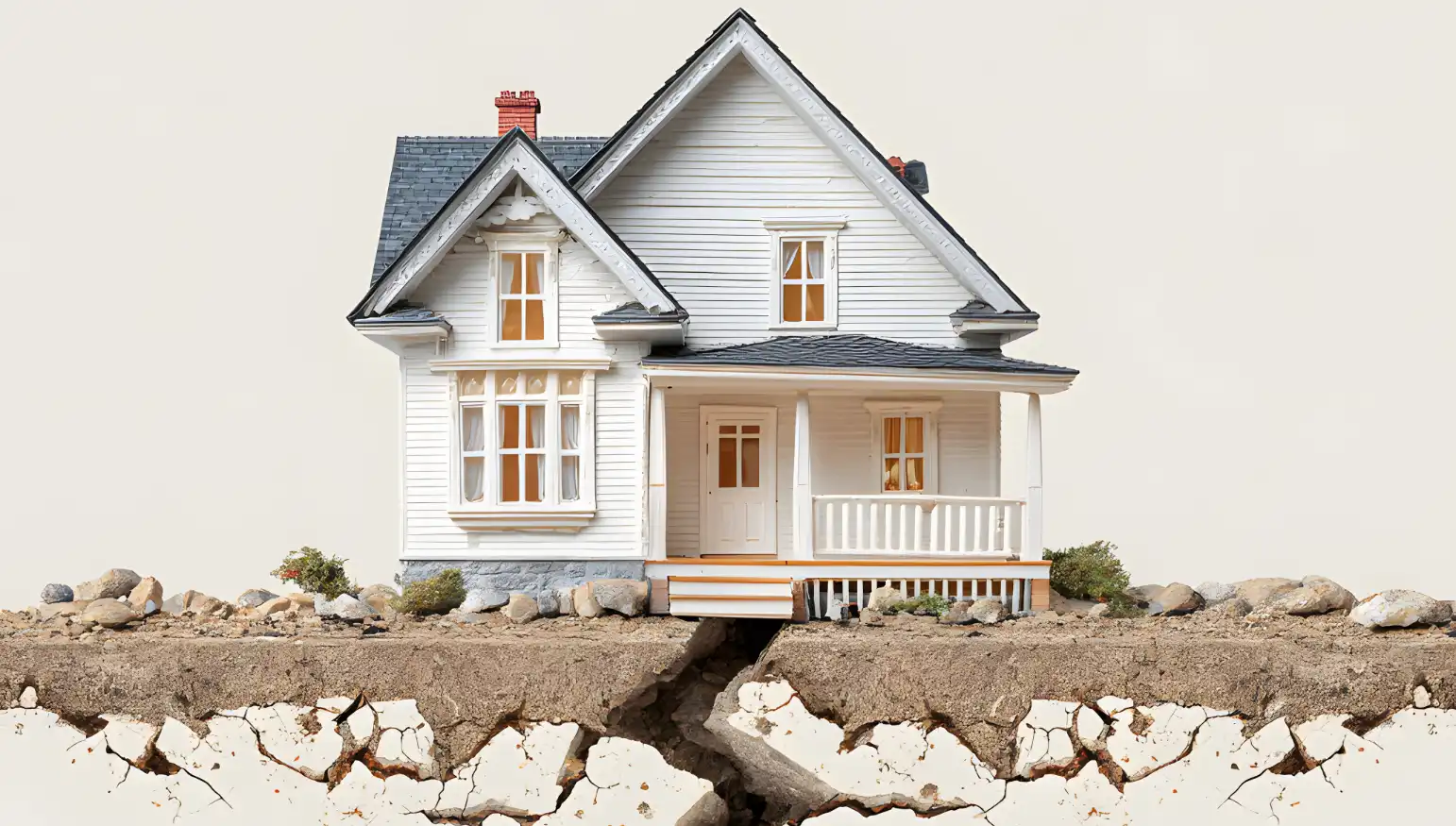

San Diego’s coastal beauty can lull even the most prepared homeowner into forgetting the silent risk beneath the soil. The same ground that frames a view of the Pacific can shift instantly, sending shockwaves through walls and rattling a chimney until bricks loosen. A single jolt can twist a sliding glass door in its frame or turn a cracked pane into a hazard that scatters across the floor.
In that chaos, a laminated glass casement window or a steel-framed patio door becomes more than a design feature. It becomes a barrier that holds firm. Choose impact-resistant windows and doors that protect your home, meet San Diego’s building codes, and preserve the beauty you’ve worked hard to create.
Why San Diego Homeowners Need Earthquake-Safe Windows and Doors
San Diego rests on a network of active faults that can crack concrete walls, shift a roof out of alignment, and send bricks tumbling from a chimney. The Rose Canyon Fault cuts through the city, making the risk impossible to ignore. A sudden quake can turn a sliding glass door or a front window into a serious hazard.
In neighborhoods with soft soil, the danger grows. Strong shaking can liquefy the ground or cripple wall, twisting the structure until windows jam shut and doors stick in their frames. In that moment, an emergency exit can vanish when you need it most.
Earthquake preparedness here goes beyond storing water or checking a gas valve. It means reinforcing the very openings that protect your family. Laminated glass with a durable interlayer can stop shards from spraying into a living room. Tempered safety glass fractures into less dangerous pieces, while vinyl windows made from polyvinyl chloride (PVC) resist cracking under sudden stress.
A strong frame matters as much as the glass. Steel reinforcements and anchored bolts keep a door aligned so it can open after intense shaking. An NFRC label on a window or door confirms independent durability and energy performance testing.
One key metric is the U-factor, which measures how well it blocks heat flow. Most high-performing impact-rated products fall between 0.25 and 1.25 Btu/h·ft²·°F, with lower values offering better insulation. In an earthquake, that same insulated, dual-pane, low-emissivity design also helps maintain the glass and frame’s structural integrity, limiting breakage and keeping the home sealed from outside hazards.
How Impact-Resistant Windows and Doors Work
Impact-resistant systems manage the sudden, uneven stresses that earthquakes unleash. When part of a wall shifts faster than the frame holding a window, the design allows controlled flex without breaking the seal. The glass layers stretch with the movement, while the bonded interlayer keeps the surface intact. That split-second flexibility can prevent a complete blowout, protecting the interior from debris, water, and outside air.
Advanced frames work in tandem with the glass. Internal reinforcements distribute pressure away from weak points, while engineered anchor placements limit racking that can trap a door in its frame. Weatherstripping and compression seals stay engaged, which helps maintain accessibility for emergency evacuation and prevents hazards like gas leaks from spreading inside.
Meeting San Diego’s Seismic and Building Code Standards

San Diego’s building codes require windows and doors in seismic zones to meet strict performance standards. Local regulations ensure that these openings don’t become points of failure when the soil shifts and the structure takes on stress. Understanding these requirements helps homeowners choose products that pass inspection and provide protection when it matters most.
- Impact-Rated Glass: To start, laminated or tempered safety glass must comply with California Building Code Section 2406 for impact and pressure resistance. This safeguard reduces the chance of sharp shards entering living spaces and shields the interior from debris or weather during a quake (California Building Standards Commission).
- Engineered Frames and Anchorage: Also, frames made from reinforced aluminum, fiberglass, or vinyl must anchor securely into walls or concrete slabs with seismic-grade bolts or plates. This anchoring helps prevent the frame from twisting or pulling away when force pushes from multiple angles.
- Verified Energy and Safety Performance: Beyond structure, products with National Fenestration Rating Council certification confirm they’ve passed independent energy efficiency and strength testing. Choosing ENERGY STAR dual-pane designs with low emissivity coatings adds thermal control while preserving structural integrity under seismic load.
- Post-Quake Accessible Door: The door, such as a sliding glass door or main door, must remain operable after the earthquake so that evacuation routes are open.
- Protection from Weather Intrusion: Finally, seals, weatherstripping, and water-resistance ratings play a role in keeping moisture, wind, and airborne hazards from infiltrating through compromised openings during or after an event.
Factors to Choosing the Right Impact-Resistant Windows and Doors
The right window or door can mean the difference between a minor scare and a major disaster. In a place like San Diego, where quakes and strong winds aren’t a matter of if but when, every choice in materials, hardware, and design becomes a line of defense.
Glass Type
Impact resistance starts with your window and door glass. Laminated glass uses a durable interlayer to hold shards in place after breakage, keeping dangerous splinters out of your living space. Tempered safety glass offers another safeguard, breaking into small, blunt fragments far less likely to cause injury. For added resilience, some homeowners apply window film, which reinforces the pane while helping to block heat and ultraviolet (UV) rays.
Frame Material
A strong pane means little if the frame gives way. Fiberglass and reinforced PVC are known for keeping their shape under seismic force. Anchored adequately into the surrounding wall or concrete slab, these frames can stay aligned even when the ground shifts beneath them. Thanks to aluminum's natural flexibility and light weight, it also absorbs seismic activity. Keep in mind, performance relies on proper installation and quality and brands like Milgard.
Locking Systems
In seismic zones, locks must do more than keep unwanted visitors out. They must also hold firm under sudden frame shifts. A multi-point locking system engages along multiple jamb sections, distributing force so one latch isn’t carrying all the load.
For sliding glass doors, reinforced interlocks between panels add stability by preventing the glass from flexing apart under pressure. Homeowners upgrading for seismic safety should also look for hardware tested under American Society for Testing and Materials (ASTM) impact and forced-entry standards, helping ensure disaster readiness and everyday security.
Energy-efficient Upgrades
Impact-resistant windows and doors can also work double duty as thermal barriers, but not all “energy-efficient” claims are created equal. In San Diego’s varied microclimates, a low U-factor is key for limiting heat transfer, while a solar heat gain coefficient (SHGC) tailored to your home’s sun exposure can prevent rooms from overheating. Dual-pane designs filled with inert gases like argon slow down thermal movement through the glass, and low-emissivity (Low-E) coatings bounce infrared heat back toward its source. With Milgard, you get the peace of mind true energy efficient windows and doors deliver.
How to Assess If You Need an Upgrade

Upgrading to impact-resistant windows and doors involves identifying vulnerabilities before they lead to costly damage. The right materials and designs can be the difference between a minor inconvenience and major repairs. Here’s what to look for when deciding if it’s time to make replacements:
- Aging or Damaged Frames: Cracked vinyl, corroded aluminum, or warped wood frames can reduce structural strength and energy efficiency.
- Outdated Glass Technology: Single-pane or non-laminated glass exposes your home to debris impact and heat transfer.
- Loose or Inefficient Seals: Failed seals around glass panes allow water intrusion, increase noise levels, and weaken insulation.
- Un-Reinforced Large Openings: Sliding or patio doors without impact-rated glass or frame reinforcement can fail under extreme force.
- Non-Compliant Installations: Windows and doors that don’t meet current building code or National Fenestration Rating Council (NFRC) standards may not hold up in an emergency.
- Poor Anchoring and Support: Weak attachment points, especially in cripple walls or older wall structures, can compromise earthquake preparedness.
- Frequent Maintenance or Repairs: If you’re constantly fixing locks, screens, or hardware, the long-term cost may outweigh a full replacement.
Protect Your San Diego Home with US Window & Door
When the ground shakes or storms roll in, you want confidence that your home will hold up when it matters most. US Window & Door offers impact-rated windows and doors built to meet San Diego’s seismic and weather demands, with designs that protect against debris, forced entry, and extreme heat. Our expert team handles everything from code compliance to precision installation, so you can enjoy peace of mind without the stress of navigating the details alone. Schedule your free estimate today and discover how the right upgrades can protect your home, improve comfort, and add lasting value.




.jpg)